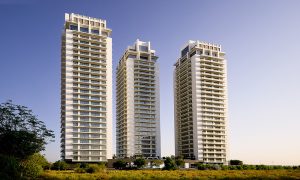Oman cement sector not facing oversupply – report
United Securities report says that country’s pipeline of infrastructure and construction projects will meet supply

Oman’s cement sector is not facing an oversupply problem due to the country’s pipeline of high-profile developments and infrastructure projects, an industry report has said.
Since 2009, it has been observed that there is a gap between the consumption and demand of cement in Oman. That gap has historically been met by imports, the United Securities report said, explaining that the data indicated that the demand for cement in the local market is higher than the production capacity of local producers.
At present, the total demand for cement is around eight million metric tonnes, with around 43% of demand met by import substitution. The demand for cement in the local market is likely to remain intact due to announced infrastructure and construction projects, the report explained.
Two companies dominate Oman’s cement industry – Oman Cement, which was incorporated in 1977, and Raysut Cement, which started operations in 1981. Together, these two companies have 57% of the local market share.
The majority of Oman’s cement consumption comes from the north of the country, where construction activities are highest in the country. Demand in that part of the country is met by Oman Cement, which is strategically located in northern Oman. Raysut Cement covers the southern region, United Securities added.
However, the research report added that being in southern Oman, Raysut has a distinct logistical advantage in terms of exporting cement to neighbouring regions, such as Yemen and East Africa. In order to match Oman Cement, the company acquired the UAE’s Pioneer Cement in 2010 to directly compete in Northern Oman.
Meanwhile, Oman Cement has added a new cement grinding capacity that is operational as of May 2016. It is also ramping up the modernisation of its kiln 2, which is expected to be completed by the end of Q4 2016.
Raysut Cement is also expanding its domestic facilities through the construction of a terminal at Duqm Port, so as to cater to demand from outside the region.
Following these developments, United Securities said that it expected the historical supply and demand gap to ‘contract post the operational and capacity expansion’.

























